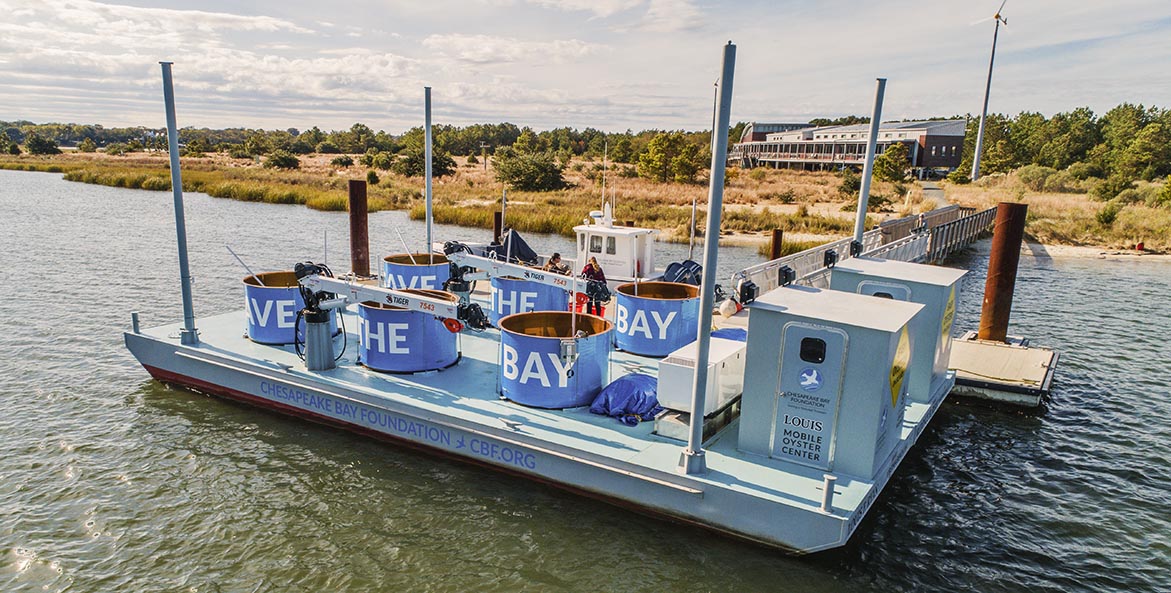(VIRGINIA BEACH, VA)—The Chesapeake Bay Foundation (CBF) today christened a cutting-edge floating oyster restoration facility that will change how CBF helps bring back Virginia’s oyster population. Officially called the Prudence H. & Louis F. Ryan Mobile Oyster Restoration Center, the creative new facility sits atop two barges. These vessels will travel to rivers where oyster restoration is taking place, dramatically increasing efficiency.
“This is an amazing leap forward for bringing back Virginia’s iconic oyster population,” said CBF Virginia Oyster Restoration Manager Jackie Shannon. “The one-of-a-kind mobile restoration center will double our capacity in Virginia, allowing CBF to produce and transplant up to 20 million oysters per year. We’ll also be able to educate and engage even more people by bringing an oyster restoration center to new communities across Tidewater Virginia.”
This is the only mobile oyster restoration center operating on the Chesapeake Bay. The two linked barges hold six 850-gallon tanks filled with local river water where baby oysters attach, or “set,” to recycled shells or concrete reefballs. These are then planted on nearby sanctuary reefs. Two cranes aboard can be used to move pallets of recycled oyster shells and heavy concrete reef balls, which quickly build three-dimensional oyster habitat.
In the past, oyster setting work took place in tanks at CBF’s facility on the campus of the Virginia Institute of Marine Science. The baby oysters would then be driven to restoration sites. While VIMS will remain an important partner in CBF’s oyster efforts, CBF will now use the new barges so that the majority of oyster–setting takes place on the very same rivers where restoration is occurring.
Reducing travel time and using local river water in tanks will help ensure healthy, well-adjusted oysters. The increased capacity comes as the Chesapeake Oyster Alliance makes strides in its goal of adding 10 billion oysters to the Bay by 2025.
The first stop for the oyster barge is CBF’s Brock Environmental Center on the Lynnhaven River, the current focus of oyster restoration efforts in Hampton Roads. CBF will begin setting baby oysters using the facility during the 2020 restoration season, which runs from late spring to early fall.
In the future the oyster barge may travel to other rivers targeted for oyster restoration, such as the Elizabeth River, York River, and the Piankatank River. At each location, CBF will work with the local community to find a location that works well for both neighbors and the surrounding environment.
The facility will be open to volunteers looking to get involved in oyster restoration, and for educational opportunities for students and members of the community. This project is made possible thanks to generous support from Prudence and Louis Ryan, the Hampton Roads Community Foundation, and the Marietta M. & Samuel T. Morgan Trust.




